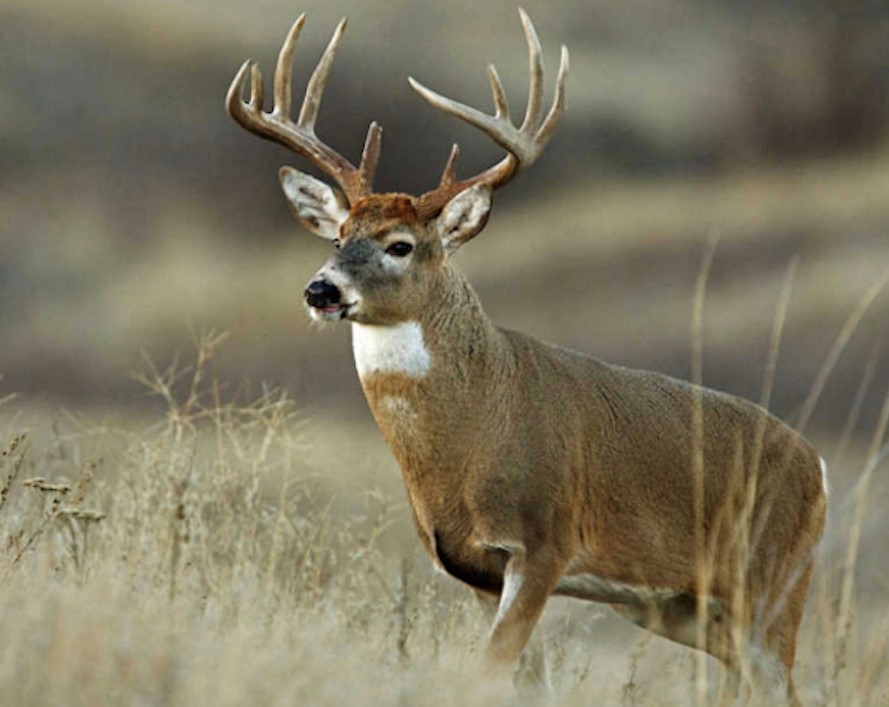28 Jul WHY DEER MOVE!!!
A healthy deer could thrive on just 3 acres. If there is water, cover, food, and privacy, deer would be incredibly happy In your back yards. Most mammals are lazy until they do not need to be. For a tree stand hunter, this could mean a long day afield with a big buck 50 yards away and never seen.

Deer, especially bucks, move when they must or are motivated. Years ago, I was sitting in a tree stand in Northern Baltimore County. I was overlooking a corn field and hedgerow, where there was a history of deer movement. Around 5 o’clock, a nice buck snuck under my stand travelling downwind and from a direction that I had never seen a deer travel in a decade. As the 4×4 passed below, I made a quick bow shot and was on the meat. As I climbed out of the stand, I noticed a lady in a long raincoat walking her dogs. Earlier, I had heard some barking. They had pushed the buck from his bed, and he was getting out of Dodge. The only problem was that the trail to Dodge went under my tree.
Predators, people, pets, kids, and farm animals have become motivators to make deer move. As properties get more developed, the suburbs are becoming more crowded. Most landowners will allow hunting when respectfully asked. Like it or not, these factors can and will impact your hunts. On another hunt, a Big Buck that I was targeting was finally making an appearance. To get to me, he needed to cross a large creek. He was marching across the 50-yard creek when a raft loaded with drunken swimmers came around the bend. I never saw that buck again.
Traditionally, there are 3-4 factors that cause deer to move. Wind, temperature, Weather, and the rut. Some could argue that wind, temperature, and precipitation are all related to Weather.
The RUT Mating is a strong desire that all mammals have. Deer become obsessed with reproduction around the same time each year. Lunar phases, daylight length, hormones, and biology start the ball rolling. For several weeks, deer are on the move to address reproduction. Much of this movement is nocturnal but there is usually a week or so when Big Smart Bucks become sex stupid. This is when the chase does.
WEATHER The weather makes it necessary for deer to move. Cold or warmer temps make deer move to higher, lower, warmer, or colder locations. Some of this relates to air currents. In the morning, as temps warm up, air currents tend to move uphill. The opposite is true in the evening. Scent is perhaps the deer’s most important defense. They relocate to where they can smell the most. Bedding areas will reflect this pattern. Good scouting can help the hunter stay in the game.
When it is warm or suddenly turns warm, deer activity gets shut down. Air temperature is a major impact on daylight deer movement. Temps over 55. degrees in Maryland, Pennsylvania, and West Virginia, slow deer movement. When temperatures rise above the normal temp for the season, deer activity decreases.
Wind can also be a slow down for deer activity. Swirling or high winds will confuse the deer’s nose. Movement of branches, leaves, and grasses also confuses the deer’s vision. This is when deer hunker down. If the wind is light and consistent, deer will begin moving into the wind toward low light.
Rain and Snow cover the food areas and change the dynamics of the habitat. The Barometric pressure that changes before and after the precipitation also alert the deer to find bedding and cover. When the Barometer is changing, going up or down, the deer will be on the move. In some cases, deer feast just before the storm, then head to bedding. Deer move the most when the Barometric drop is sudden. Once the weather settles in, deer will not move. As the storm ends, the deer will immediately increase activity. Studies show that deer activity and feeding tend to be highest when the Barometric Pressure is between 29-31 inches. This is the time to be on the hunt.
HUNTING PRESSURE is also a concern for deer movement. When deer feel the pressure, they tend to stay put and move only a little after dark. I have seen deer completely covered in snow and nearly invisible as I walked within feet of them. On one deer drive, we pushed through a thick clump of Mountain Laurel. As I stumbled over the branches, I thought I smelled a deer. When I stopped, the buck was staring at me from under a bough of laurel, just 5 feet away. Another driver had also passed within yards of this hidden deer. At first, I thought he was dead or wounded. Once I touched him with a stick, he was up and headed in the opposite direction.
The First Rule of Deer Hunting is to find the Deer. The Second Rule is to shoot the deer. The Third Rule is to go back to Rule Number 1!
Hunt Hard, Hunt Harder!
Montana Grant
For more Montana Grant, find him moving at www.montanagrantfishing.com.

